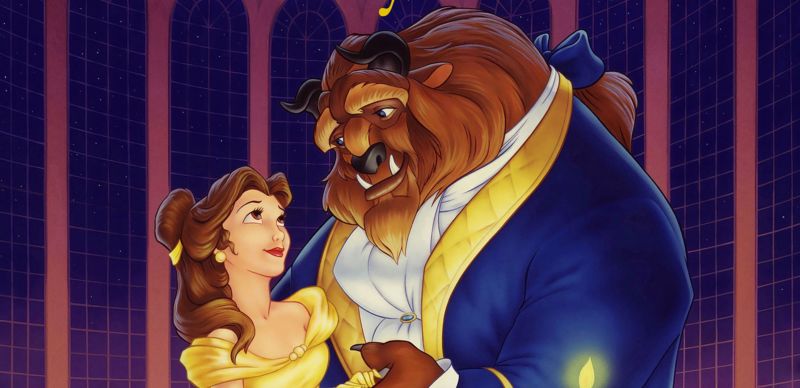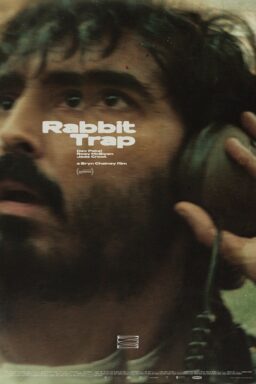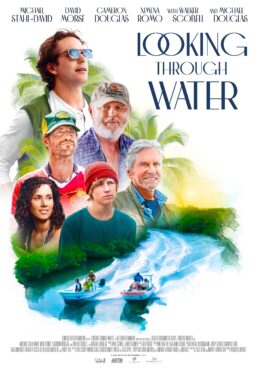It’s a tale as old as time: girl meets beast, girl loves beast, cue pitchforks. Last December, Disney celebrated the 30th anniversary of “Beauty and the Beast” (1991), the most iconic modern iteration of this archetypal story, and the first animated film to be nominated for a Best Picture Oscar. Countless variants of the monster romance archetype exist, but many feature a young woman winding up within the clutches of a powerful and physically frightening “beast” who falls in love with her, thereby giving her power over him. Examining why this story endures can reveal insights about our society. Those who only see the monstrous face of this trope miss the prince beneath the enchantment.
Many monster romance stories originated in places and eras where arranged marriage was common among those of high status, where even in love matches women of all classes were legally controlled by their husbands, and divorce was not an option. The archetype reaches back at least as far as ancient Greece with the myth of Eros and Psyche, and to some extent Hades and Persephone—a story still popular today, as seen in Broadway Tony Award winner Hadestown. The most famous of the Medieval and Renaissance fairytale versions of this archetype is “Beauty and the Beast,” originating in 1740 as La Belle et la Bête by Gabrielle-Suzane de Villenueve, but so many fairytales follow the archetype that there’s a Aarne-Thomson-Uther folk tale classification for it—numbers 400–459: supernatural or enchanted spouse or other relative—with over two dozen tales. In the Victorian era, the archetype continued through gothic novels such as The Phantom of the Opera, The Hunchback of Notre Dame, and Dracula, all with several movie versions.
The archetype persists in the modern day where we haven’t come as far as we might wish in the struggle for gender equality. Bodice rippers in the ’70s bridged the gap between gothic novels and modern versions of the archetype such as “Labyrinth” (1986), “Edward Scissorhands” (1990), and “V for Vendetta” (2005). In 2005, Twilight kicked off a boom of teen paranormal romances, and inspired Fifty Shades of Grey, which returned the archetype to the adult market, where it spurred the shapeshifter love interest trend in adult romance.

Despite its long history, this archetype has faced backlash in recent decades. Individual works can contain problematic elements with serious real-world consequences (such as Fifty Shades of Grey’s misleading portrayal of BDSM and the Twilight series’ misappropriation of Quileute culture), but often the backlash targets the archetype itself rather than its execution; literary agent and writer Zabé Ellor wrote, “90% of Twilight Discourse is ‘should Beauty and the Beast stories exist?’ and the answer is ‘well, they do.’”
The most easily dismissed criticism is disdain of the archetype for being popular with teenage girls. Actually, appealing to the masses involves craft, and mocking something because teenage girls like it is just sexism and ageism in a trench coat.
Other criticisms come from genuine fear that monster romance is inherently and unavoidably antifeminist. A few accuse the archetype of depicting Stockholm syndrome, a term with its own problems: “Stockholm syndrome—a dubious pathology with no diagnostic criteria—is riddled with misogyny.” Some even call the archetype harmful, particularly to teenage girl readers. To any teenage girls out there who enjoy this archetype, I have this to say: there’s nothing wrong with you. The stories you like are not harming you. In fact, there are solid reasons to find them compelling.
Critics who dismiss this archetype wholesale without analyzing why it is popular end up also demonizing what teenage girls like without trying to seriously engage. Writer and folklore teacher Nancy Willard illuminated that amongst the theories for why similar stories appear across time and cultures is the idea that perhaps they spring from prevalent human experiences at particular life stages, and that fairytales can be concrete representations of anxieties about those experiences. The “monster” in these stories usually has some physical trait that makes him frightening and alien to the heroine and the audience; sometimes, the particular “monstrous” features reflect an ableist dehumanization of disability and physical difference (as with Quasimodo, Eric, and V), and other times the features are purely magical (as with the Beast, Jareth, and Edward), but in all cases, the beast’s “monstrous” appearance can be analyzed as a symbol of fear. With all that in mind, what specific anxieties could monster romances speak to?
First, monstrousness can often be a metaphor for the experience of queerness—of being othered, loving the other, being painted as monstrous by society. This idea has been thoroughly explored in the book Monsters in the Closet by Harry M. Benshoff.
The beauty and the beast archetype also evokes young adult anxieties regarding romance and marriage. In particular, monster romances speak to the anxieties of a young woman faced with marriage to a man in a heteronormative patriarchal society that gives him greater power than her, and sometimes even power over her. For much of western history, marriage has been considered an important coming-of-age milestone, particularly for women. Naturally this would generate great anxiety because a woman’s most acceptable social position required her to surrender herself to a man’s legal control—and what if he was a monster? In fairytales, the abstract fear about a future spouse becomes embodied in the beast’s monstrous appearance. Even today after feminists have fought for women’s rights, that fear lingers in the gendered inequalities that remain. So long as there are patriarchies, monster romances will resonate. Suzannah Rowntree writes:
[E]very monster romance … [is] about sexual inequity/predation. [T]he reason these stories resonate with women is not that we find monsters attractive but simply that for straight women at least there is no one [to be attracted to] BUT … people who are … more powerful, and capable (if evil) of preying on us[.] … [To] paraphrase GK Chesterton: Monster romances do not give the girl her first idea of a monster being sexy. She has known that intimately her whole life. What the monster romance provides is hope that the monster can change[.]

Men are not literally monsters—“monster” in this archetype can be a metaphor for the gendered power imbalance that exists in any patriarchy. In the non-literal world of fantasy, Edward Cullen the 104-year-old vampire who looks, acts, and is socially positioned as a 17-year-old does not represent an adult groomer but a 17-year-old high school student who is equal to the heroine in age but not in status. His vampire powers can be seen as a concrete way of representing the privilege of being a boy in a patriarchal society. A human girl having less power than her supernatural male love interest is not automatically a sexist statement that girls are inherently inferior—it can be a metaphor for structural gender inequality. The heroine of these stories is often accused of lacking agency; however, a power differential doesn’t necessarily render her passive. Often, as in La Belle et la Bête and the Disney adaptation, or even more so in other fairytale versions such as “East of the Sun, West of the Moon,” she saves her love interest from death, a curse, or other danger. Sometimes she saves herself, like the way Mina is instrumental in defeating Dracula in the original book. In other cases, such as in the tale of Eros and Psyche, her agency doesn’t fit a masculinized hero archetype but rather shows subtly through strong relationships. And sometimes, such as in “V for Vendetta” (2005), the story explores how a character copes and finds freedom in a limiting situation—an experience common among women in patriarchal societies.
Monster romances frequently comfort these anxieties around marrying someone with more power. Most portray a fantasy that the “monster,” despite his power, will treat the heroine well. The Beast becomes a prince. These stories promise young androphilic women that no matter how scary structural gender inequality may seem, there are good men who will not hurt her, and while happiness is not guaranteed, it is possible.
Additionally, these stories provide space to explore fear and desire within an unequal context. That desire can also be a source of anxiety represented by the monster. In response to accusations that Goblin King Jareth from “Labyrinth” is a predator, a media blogger rebuts: “he was written to simultaneously represent young girls’ desires and anxieties about the unfamiliar world of sex and adulthood … the real villain is Sarah’s own uncertainty and fear.” Jareth is not a literal adult predator—he is Sarah’s fantasy.
Like with Jareth, human fantasies can contain an element of danger. As an extreme example, researcher Justin Lehmiller conducted a survey where more than half of the participants reported fantasies involving nonconsensual aspects. Not only is this common, it isn’t considered harmful: “Studies by other human sexuality researchers count [ravishment] fantasies as within the range of normal sexuality. Researchers unequivocally insist that these fantasies do not, in any way, indicate that a woman has a fantasy of being raped in real life.”
Similarly, just because someone desires stories about an experience doesn’t mean they want that experience in reality. Critically acclaimed Broadway actor, director, and writer Lin Manuel Miranda explains that art “is a safe place to put all the stuff you don’t want to put in your real life … I don’t want to have an affair. I don’t want to have a f**king gunfight. But! There’s a part of your brain that wants to experience everything, and so [art]’s a safe place to explore it all … Art is the place to safely explore all those other sides of you[.]” We understand that people can watch fictional serial killers or superheroes without becoming one—so why fear otherwise here? Panicking about girls’ fantasies harming them while treating boys differently plays into the sexist fallacy that girls are naturally passive. It’s antifeminist to act as if girls lack critical thinking skills to the extent that they cannot separate stories from reality and will unquestioningly imitate fiction in their real lives.

Fictional fantasies offer a framework where the viewer can engage with their desires and anxieties in a safe environment because they control their own experience. Lehmiller adds, “the way people tended to describe these fantasies, they made it clear that it was consensual … they’re picturing a scenario that unfolds on their own terms.” The same can be applied to fiction, because, similar to fantasizing, you can stop whenever you want. A viewer who consents to engage with a story depicting any degree of an unhealthy relationship can revoke that consent at any time by closing the book or turning off the video. So long as works that satisfy such desires are clearly labeled so viewers can make informed choices about engaging with depictions of unhealthy relationships in a healthy, age-appropriate manner, there’s no harm in such stories existing or people consenting to view them. The Goblin King may trick and scheme all he wants, but in the end, Sarah defeats him with the truth: “You have no power over me.” Her fantasies do not degrade her—they empower her.
There can also be value in depicting unhealthy relationships that are framed as accurately horrifying. Fiction is a safer place to encounter unhealthy relationships than reality, and might even help people recognize and cope with them. What of beasts who are not secretly good-hearted princes or consensual power-play fantasies? The archetype offers a comforting answer to that anxiety as well in stories such as Dracula and Bluebeard: if he turns out to be an actual predator, there’s hope you can escape with the support of friends and family.
The beast may be a prince, a daydream, or a nightmare. While a monster romance can be well or poorly crafted, as in any other genre, all subsets are valuable because they reflect the range of human experience. As the character Chaucer says in “A Knight’s Tale” (2001), “All human activity lies within the artist’s scope.” But right now, stories are under attack. In the U.S., we live under an onslaught of book banning spurred by fearmongering about exposing children to “dangerous” ideas. But the book banners are more dangerous than any story they could ban. Stories can be a way of coping with reality. They can help people access comfort, explore desire, and process fear. They can empower people of marginalized genders to safely navigate how gendered structural inequality and power imbalance play into romantic relationships. They can illuminate where we’ve been as a society and where we are: a patriarchal culture that is once again attempting to exert control over marginalized people, partly by attempting to ban their stories. Anxieties about socially constructed power imbalances will remain regardless of whether there are stories to help people cope. Monster romances have a place for audiences cis and trans, queer and straight, and in between. Even if a story isn’t for you, it may resonate with someone else. This archetype should be examined, not excised. In the end, an archetype that might appear monstrous might actually, upon a further acquaintance, not be monstrous at all.











